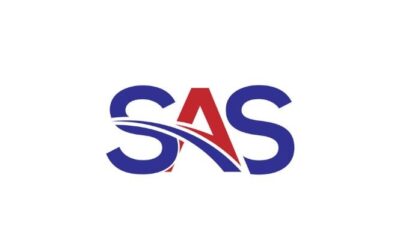Education
Cosmic Web Lights Up in the Darkness of Space
Like rivers feeding oceans, streams of gas nourish galaxies throughout the cosmos. But these streams, which make up a part of the so-called cosmic web, are very faint and hard to see. While astronomers have known about the cosmic web for decades, and even glimpsed the glow of its filaments around bright cosmic objects called quasars, they have not directly imaged the extended structures in the darkest portions of space—until now.
New results from the Keck Cosmic Web Imager, or KCWI, which was designed by Caltech’s Edward C. Stone Professor of Physics Christopher Martin and his team, are the first to show direct light emitted by the largest and most hidden portion of the cosmic web: the crisscrossing wispy filaments that stretch across the darkest corners of space between galaxies. The KCWI instrument is based at the W. M. Keck Observatoryatop Maunakea in Hawaiʻi.
“We chose the name Keck Cosmic Web Imager for our instrument because we were hoping it would directly detect the cosmic web,” says Martin, who is also the director of the Caltech Optical Observatories, which includes Caltech’s portion of Keck; other Keck partners are the University of California and NASA. “I’m very happy it worked out.”
Galaxies in our universe condense out of swirling clouds of gas. That gas then further condenses into stars that light up the galaxies, making them visible to telescopes in a range of wavelengths of light. Astronomers think that cold, dark filaments in deep space snake their way to the galaxies, supplying them with gas, which is fuel for making more stars. In 2015, Martin and his colleagues found “smoking-gun evidence,” as Martin describes it, for this so-called cold-flow model of galaxy formation: a long filament funneling gas into a large galaxy. For this work, they used a prototype instrument to KCWI, the Cosmic Web Imager, which was based at Caltech’s Palomar Observatory.
In that case, the filament was being lit up by a nearby quasar, the bright nucleus of a young galaxy. But most of the cosmic web lies in the desolate territory between galaxies and is hard to image.
“Before this latest finding, we saw the filamentary structures under the equivalent of a lamppost,” says Martin. “Now we can see them without a lamp.”
The new findings appear in a paper published in Nature Astronomy on September 28.
Martin has been driven to reveal the cosmic web in its full glory ever since he was a graduate student. This detailed imaging of the web, he says, will provide astronomers with missing information they need to understand the details of how galaxies form and evolve. It can also help astronomers map the distribution of dark matter in our universe (dark matter makes up about 85 percent of all matter in the universe, but scientists still don’t know what it is made of).
“The cosmic web delineates the architecture of our universe,” he says. “It’s where most of the normal, or baryonic, matter in our galaxy resides and directly traces the location of dark matter.”
The Feeble Glow of Filaments
The best way to see the cosmic web directly is to pick up signatures of its main component, hydrogen gas, using instruments called spectrometers, which spread light out into a multitude of wavelengths, also known as a spectrum. Hydrogen gas can be identified within these spectra via its strongest emission line, called the Lyman alpha line. Martin and his colleagues designed KCWI to find these faint Lyman alpha signatures across a two-dimensional (2D) image of the cosmos (hence KCWI is known as an imaging spectrometer). The instrument’s first installment covers the “blue” portion of the visible-light spectrum, spanning wavelength ranges from 350 to 560 nanometers. (The second part of the instrument, called the Keck Cosmic Reionization Mapper, or KCRM, which sees the red, or longer-wavelength portion, of the visible spectrum, was recently installed at Keck).
KCWI’s precise spectrometers can look for the Lyman alpha signatures of the cosmic web across a range of wavelengths. Because of the expansion of the universe, which stretches light to longer wavelengths, gas that is located farther away from Earth has a redder Lyman alpha signature. The 2D images captured by KCWI at each wavelength of light can be stacked together to make a three-dimensional (3D) map of the emission from the cosmic web. For this observation, KCWI observed a region of space between 10 and 12 billion light-years away.
“We are basically creating a 3D map of the cosmic web,” Martin explains. “We take spectra for every point in an image at range of wavelengths, and the wavelengths translate to distance.”
Confusion with the Diffuse Light of Space
One challenge in detecting the cosmic web is that its dim light can be confused with nearby background light that suffuses the skies above Maunakea, including the glow from the atmosphere, zodiacal light from the solar system (generated when sunlight scatters off interplanetary dust), and even our own galaxy’s light.
To solve this problem, Martin came up with a new strategy to subtract this background light from the images of interest. “We look at two different patches of sky, A and B. The filament structures will be at distinct distances in the two directions in the patches, so you can take the background light from image B and subtract it from A, and vice versa, leaving just the structures. I ran detailed simulations of this in 2019 to convince myself that this method would work,” he says.
The result is that astronomers now have “a whole new way to study the universe,” as Martin says.
“With KCRM, the newly deployed red channel of KCWI, we can see even farther into the past,” says senior instrument scientist Mateusz Matuszewski (MS ’02, PhD ’12). “We are very excited about what this new tool will help us learn about the more distant filaments and the era when the first stars and black holes formed.”
Speaking of new ways to view the universe, Martin teamed up with artist Matt Schumaker to translate data from the cosmic web into music for a project called “Spiral, supercluster, filament, wall (after Michael Anderson).” The project celebrates the life of Anderson, who perished along with his fellow astronauts in the Space Shuttle Columbia accident in 2003. Martin, who “pretended the filaments were giant violin strings,” translated the filaments’ masses to frequencies based around the note middle C. The piece can be heard here.
The Nature Astronomy study, titled “Extensive diffuse Lyman alpha emission correlated with cosmic structure,” was funded by the National Science Foundation and Caltech. Other authors include grad student Zeren Lin; Matuszewski; and senior software engineer James (Don) Neill of Caltech; Behnam Darvish, formerly a postdoctoral scholar at Caltech; Renyue Cen of Princeton University; Patrick Morrissey of the Jet Propulsion Laboratory and a visitor in physics at Caltech, which is managed by Caltech for NASA; and Anna Moore of the Australian National University.
Source – Caltech
-

 Auto1 year ago
Auto1 year agoBentley Breaks Ground On New Launch Quality Centre And Engineering Technical Centre
-

 Technology1 year ago
Technology1 year agoSAP Expands 25-Year Partnership with Lockheed Martin
-

 Health2 years ago
Health2 years agoOracle Helps Healthcare Providers Improve Patient Care with Better Financial And Operational Planning
-

 Technology1 year ago
Technology1 year agoNew Global Study: 1 in 2 Executives Experiencing “Resiliency Gap”
-

 Food and Beverage2 years ago
Food and Beverage2 years agoTop FMCG Companies In The World


















